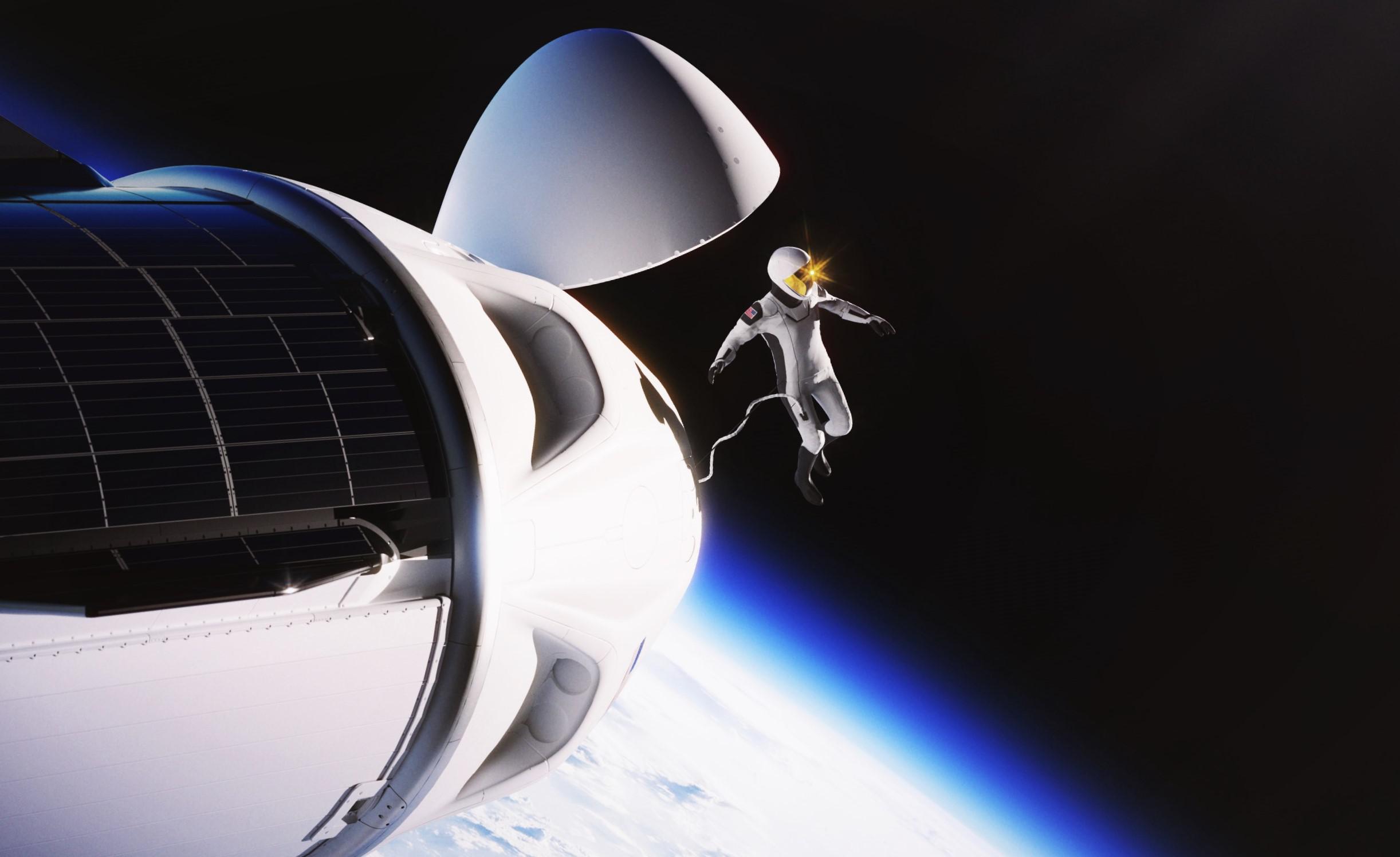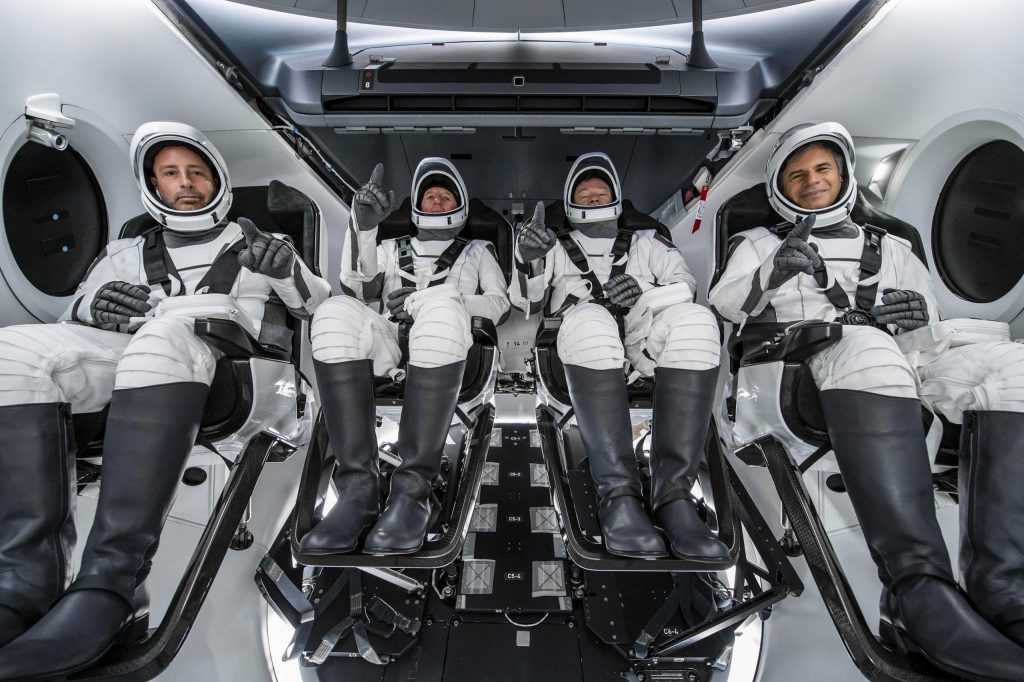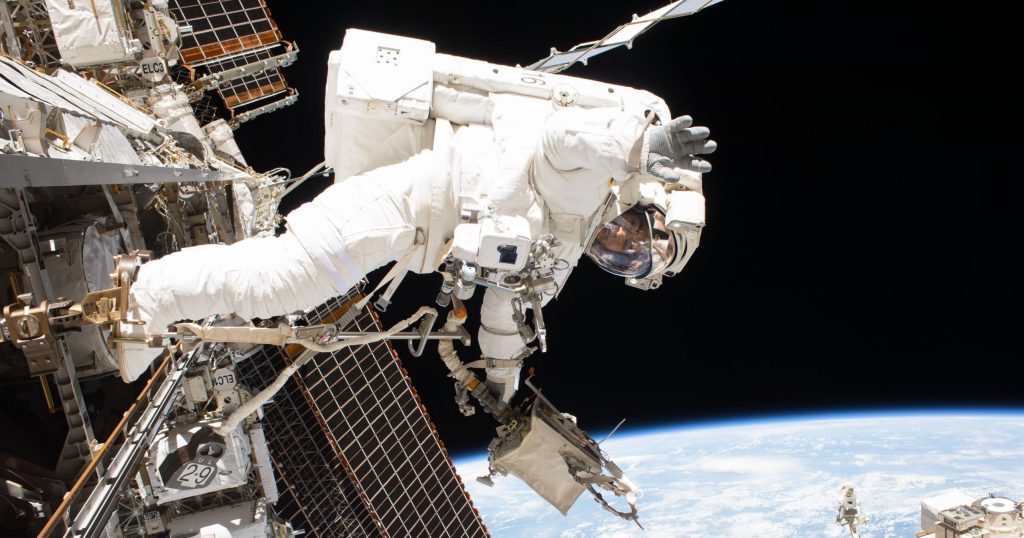

News
SpaceX ready to begin training astronauts for first private spacewalk
Two members of the “Polaris Program” say that SpaceX could begin training private astronauts for the first private spacewalk in spaceflight history as early as May or June 2022.
Revealed earlier this year, the Polaris Program is a sort of hybridization of orbital spaceflight tourism and technology development and has one primary goal: to “rapidly advance human spaceflight capabilities.” Created in partnership with SpaceX by billionaire and Shift4 Payments founder Jared Isaacman, who also funded and flew on SpaceX’s first private Crew Dragon launch, Polaris aims to pick up where Inspiration4 left off last year.
While it will still be affiliated with and seek to help St. Jude Children’s Research Hospital, the Polaris Program will focus on the development of several crucial technologies that SpaceX will need to accomplish its ultimate goal of spreading humanity throughout our solar system.
One of those crucial technologies is a cheap, reliable, and easy-to-use spacesuit that will allow future SpaceX astronauts to work outside of the safety of their spacecraft in the vacuum of space, and, one day, walk on the surfaces of other planets and moons. For Crew Dragon, SpaceX has already developed an ‘intra-vehicular activity’ or IVA pressure suit that all Dragon astronauts must wear during mission-critical maneuvers. In the event of capsule depressurization, the suits would be able to keep Dragon astronauts alive inside the capsule for at least a few days, supplying them with clean air and maintaining enough pressure to avoid altitude sickness (or worse).
However, because IVA suits generally prioritize unpressurized mobility, the astronauts inside them can do very little when the suits are fully pressurized. At sea level, every person on Earth is subjected to standard atmospheric pressure, which amounts to about 101 kilopascals or 14.5 pounds per square inch. In a spacesuit, the suit itself must maintain a pocket of air at similar pressures, ultimately meaning that the outer skin of a suit must resist the same force. To put that into context, even operating at the absolute minimum pressures that humans can realistically tolerate and use (4-6 psi), simply moving one’s arm in an IVA suit could require hundreds of pounds or kilograms of force.

Even in NASA’s aging extra-vehicular activity (EVA) spacesuits, which feature mechanical joints and other upgrades meant to make movement and life easier inside them, spacewalks are one of the most brutal and exhausting physical activities conceivable, requiring extraordinary levels of near-constant exertion for hours on end. According to comments made to Spaceflight Now by Jared Isaacman and by pilot Scott Poteet in an interview covered by AmericaSpace, SpaceX’s first EVA suit will be quite basic. To some extent, they will be heavily modified versions of SpaceX’s existing IVA suit design, but with much more advanced thermal management, an improved helmet/visor, and – most importantly – the addition of a number of mechanized joints.


As was the case with early NASA EVA suits developed in the 1960s, SpaceX’s first EVA suits will receive consumables, power, and communications through cables (tethers) that connect to Dragon’s life support. It will take SpaceX some time to develop a miniaturized, portable life support system as safe and capable as the packs used on NASA’s EVA suits. A tethered EVA suit will still allow SpaceX or private astronauts to perform EVAs and work on or inspect the exterior of their Crew Dragon or Starship spacecraft – capabilities that could save lives in certain emergency scenarios. SpaceX’s first priority, then, will be to make sure that the basics work well in space and that the suits actually allow astronauts to perform tasks that require good finger and limb dexterity without immediately exhausting themselves.
“You’re adding lots of redundancies in the suit that don’t exist today, since it’s more last line of defense,” Isaacman said, referring to the differences between SpaceX’s current suit and the new extravehicular spacesuit. “You have a new visor, new seals, then mobility, joints everywhere for increased mobility and dexterity in the fingers and such. I think, visually, it will be more along the lines of what it currently looks like, but very much like a new suit.”
Spaceflight Now – May 10th, 2022
The first of up to three Polaris missions – Polaris Dawn – is currently scheduled to launch as early as November 2022. All four private astronauts – made up of two Polaris employees and two SpaceX employees – will wear the new EVA suits in place of their usual IVA suits, while only two members of the crew will ultimately attempt to exit the capsule and perform a single EVA that could last roughly 30-90 minutes. To do so, the entire Dragon will be depressurized and one of two hatches opened will be opened, while the the other two EVA-suited astronauts will simply remain in their seats. Regardless of the outcome, it will be the first private spacewalk in the history of spaceflight.
The astronauts training to prepare for Polaris Dawn will focus heavily on the EVA, offering either the two chosen crew members or all four candidates an opportunity to experience deep-sea diving and test EVA suits both underwater and inside a Dragon capsule simulator.
Beyond supporting SpaceX’s EVA spacesuit development, Polaris Dawn’s crew will also conduct a range of science experiments, attempt to connect to high-speed internet in orbit through Starlink laser links, and even try to break the record for the highest Earth orbit reached by a crewed spacecraft (1400 km / 870 mi).
Elon Musk
Elon Musk confirms Grok 4 launch on July 9 with livestream event
The rollout will be accompanied by a livestream at 8 p.m. Pacific Time.

Elon Musk has officially confirmed that Grok 4, the latest version of xAI’s large language model, will launch on July 9. The rollout will be accompanied by a livestream at 8 p.m. Pacific Time, hosted on xAI’s official account on X.
xAI goes straight to Grok 4
Back in May, leaks indicated that xAI was getting ready to ship Grok 3.5. Considering Musk’s recent comments, however, it appears that the artificial intelligence startup would be focusing on the large language model’s fourth iteration instead. As noted in a Financial Express report, users on X have sighted references to Grok 4 in the lead up to the update’s launch, such as “grok-4-prod-mimic” and “Grok 4 Code.”
Musk’s Grok 4 announcement comes as AI competition intensifies between major players including OpenAI, Google, and xAI. With Musk’s Colossus supercomputer fully operational in Memphis, xAI appears to be accelerating its AI product roadmap.
Musk pushes Grok toward political neutrality
Grok 4’s launch also follows a recent controversy involving political bias, as noted in a CNN report. Last week, Grok responded to a user on X stating that political violence in the U.S. since 2016 had come more from the political right than the left. The chatbot noted in a later reply that its answer was based on information from sources like Reuters, the Journal of Democracy, and University of Maryland studies.
Musk stated that Grok’s response was a “major fail.” “Major fail, as this is objectively false. Grok is parroting legacy media. Working on it,” he wrote in a post on X. By the end of June, Musk noted that he was “grinding all night with the xAI team” and that they were making “good progress.” He also stated that the model “Will be called Grok 4. Release just after July 4th. Needs one more big run for a specialized coding model.”
News
Tesla opens massive solar Supercharger station in California
The Supercharger opened to customers ahead of Fourth of July weekend, while Tesla continues phase two of construction on the site.

Tesla has officially launched the first several Supercharging posts at a massive station in California, notably including solar canopies and grid-scale batteries to offer completely renewable charging.
Last week, Tesla announced on X that it opened the first 84 Supercharger stalls of a planned 168-stall station in Lost Hills, California. Additionally, the massive Supercharger project features 11MW of solar canopies and 10 Megapack batteries for off-grid charging powered entirely by solar energy.
Tesla completed the first phase of the project just days ahead of the busy Fourth of July holiday weekend, adding that initial construction took just eight months. In addition to the remaining charging stalls, Tesla says it’s building a set of lounge areas, renderings of which can be seen below alongside current photos of the site.
Notably, the site also includes V4 charging posts for the company’s latest available charging speeds, and it’s located near the busy junction between I-5 and Highway 46 in Kern County.
“Thank you [Kern County] and [PG&E] for collaboration and approvals,” Tesla wrote in a follow-up post.

Credit: Tesla Charging | X

Credit: Tesla Charging | X

Credit: Tesla Charging | X

Credit: Tesla Charging | X
Tesla Supercharger Maps for North America, Europe, and Asia pic.twitter.com/0U5r0XRPyo
— TESLARATI (@Teslarati) July 2, 2025
READ MORE ON TESLA SUPERCHARGERS: Tesla launches ultra-fast V4 Superchargers in China for the first time
Testing at the LA Diner, plus Musk update on potential Tesla solar Gigafactory
The huge Tesla Supercharger station completed phase one of construction fairly quickly, especially given how long Tesla has been working on its unique Los Angeles diner, drive-in, and Supercharger location. Still, the company was seen performing some testing at the nearly-completed charging station earlier this month, and will reportedly be holding a job fair.
Elon Musk also responded on Monday morning to a post on X, suggesting that Tesla is “thinking about” building a U.S.-based solar Gigafactory in order to help support increased power needs with AI growth, and to bolster domestic solar production.
Tesla is building a new UFO-inspired Supercharger in the heart of Alien country
News
Tesla driver walks away from major accident with minor injuries
The driver sustained only minor injuries, and the exact cause of the crash remains under investigation.

The driver of a Tesla Model Y survived and walked away from a harrowing accident on Monday in California, only sustaining minor injuries despite the vehicle being impaled by a guardrail.
On Monday morning around 4:34 a.m., the Los Banos division of the California Highway Patrol (CHP) responded to the accident on I-5 near Panoche Road, involving a 23-year-old in a Tesla Model Y. According to a post on social media, the driver veered off the road for unknown reasons in the northbound lane, before crashing directly into the guardrail and impaling the vehicle.
You can read the full message and photos from Los Banos CHP below, as were shared in a Facebook post on Monday afternoon.
This morning a Tesla model y was traveling in the #1 northbound lane of I-5 north of Panoche Rd. For unknown reasons driver allowed V-1 to veer off the roadway, travel through a dirt center divide, and crashed into the fixed metal guardrail. Lucky for the driver he only sustained minor injuries and was able to walk away. Driving a vehicle requires 100% attention to the road. Avoid distractions and focus on driving.

Credit: CHP Los Banos (via Facebook)

Credit: CHP Los Banos (via Facebook)

Credit: CHP Los Banos (via Facebook)
In a statement to SFGate, CHP officer Myles Anderson said that the driver only sustained minor injuries, while no arrests are made and drugs and alcohol are not suspected to have been involved. The report also notes that Tesla’s “cruise control and lane assistance features” were activated, according to Anderson. However, it’s not entirely clear if this is referring to Supervised Full Self-Driving (FSD), or to the cruise control and lane assist features baked into Autopilot.
At the time of writing, CHP has not yet responded to Teslarati’s request for clarification and additional details on the matter.
Tesla Crash Safety Ratings across its lineup: pic.twitter.com/ny30R7ceji
— TESLARATI (@Teslarati) July 1, 2025
READ MORE ON TESLA SAFETY: Tesla rolls out crucial new safety feature aimed at saving children
The news comes after Tesla has touted its vehicles as incredibly safe for many years. In December, for example, the company highlighted receiving top safety scores from regulators on four different continents throughout the world, including from the National Highway Traffic Safety Administration (NHTSA) and the Insurance Institute of Highway Safety (IIHS) in the U.S.
Tesla has also listed the goal of making its vehicles the safest on the road throughout the years, both in the overall design of its vehicles and in its Autopilot and Full Self-Driving (FSD) programs.
Tesla Model 3 ranks as the safest new car in Europe for 2025, per Euro NCAP tests
-

 Elon Musk1 week ago
Elon Musk1 week agoTesla investors will be shocked by Jim Cramer’s latest assessment
-

 News2 weeks ago
News2 weeks agoTesla Robotaxi’s biggest challenge seems to be this one thing
-

 News2 weeks ago
News2 weeks agoWatch the first true Tesla Robotaxi intervention by safety monitor
-

 Elon Musk1 week ago
Elon Musk1 week agoA Tesla just delivered itself to a customer autonomously, Elon Musk confirms
-

 News2 weeks ago
News2 weeks agoTesla Robotaxi rollout proves that Elon Musk still delivers, even if it’s late
-

 Elon Musk2 weeks ago
Elon Musk2 weeks agoElon Musk commends Tesla team on successful Robotaxi launch
-

 Elon Musk2 weeks ago
Elon Musk2 weeks agoxAI welcomes Memphis pollution results, environmental groups push back
-

 Elon Musk2 weeks ago
Elon Musk2 weeks agoElon Musk confirms Tesla Optimus V3 already uses Grok voice AI


















